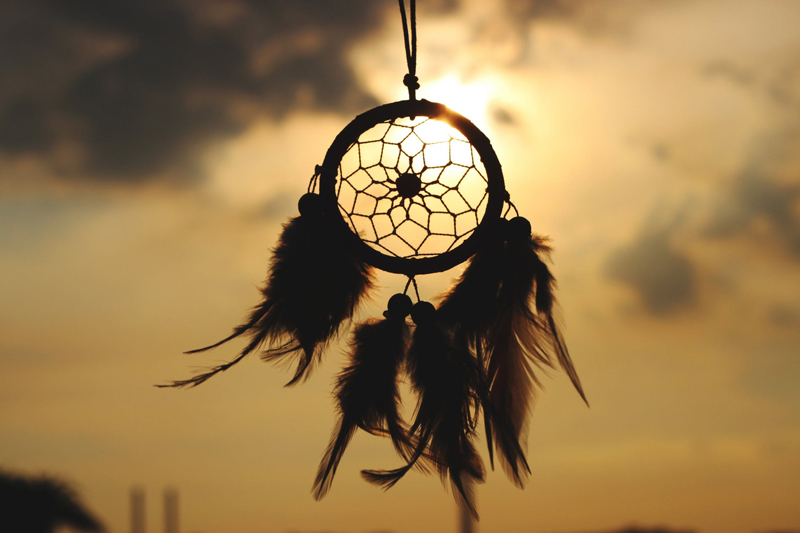Here's the latest article from the Native American site at BellaOnline.com.
Pacific Northwest Salmon and The Klamath River
I grew up in the Pacific Northwest and salmon was always a food that us kids looked forward to, especially smoked salmon. I
remember my parents, grandparents, aunts and uncles talking about "the mighty Klamath". The Klamath and stories told at
family gatherings were around since I can remember. To me "the mighty Klamath" was a legend, but, to the Native American along it's shores,
it was a way of life.
Centuries before we were told by the experts that eating fish was healthy, the Pacific Northwest Native American already knew
this. They had wild salmon from the Klamath River in their diet every day. The omega oils and the lean meat of the salmon
kept them healthy and was their livelihood. There were five different kinds of salmon found in the Klamath River and these
were at the center of life for the people. The first salmon caught in the spring was cause for ceremonial celebrations of
gratitude and thanks and prayer for a good year of fishing. The Sockeye, Pink, Coho, Chum and the Chinook or King (which
were the largest) not only gave the Indians their main staple supply of food, but were held sacred as symbolic of the circle
of life. The salmon lived in the ocean, then returned every spring to swim up river and mysteriously found the same place
where they were spawned to lay their eggs and die. The young salmon, when hatched, would start the cycle again by finding
their way back to the ocean.
The people smoked a large portion of the salmon to last them throughout the long winter months. One way of smoking the
salmon was to build a firepit in the beach with alder wood. When the coals were burning low, the salmon filets were slid
onto redwood sticks, seasoned with salt and pepper then the sticks were placed in a circle around the edge of the fire pit to
let the smoke cook the salmon for about 45 minutes or so. The sticks were moved around occasionally to let the fish cook on
all sides. The smoked salmon was then slid off the sticks and stored when cool. It was usually the women who smoked the
salmon and prepared it for the winter months by slicing, hanging and dryig the smoked fish. This kept everyone fed all
winter.
Another, modern way of using salmon is called "Indian Candy Smoked Salmon".
1/2 gallon water
1 cup pickling salt
2 cups brown sugar (dark is better to use)
1 cup real maple syrup
3/4 cup honey
1/4 cup water
Clean and cut salmon into 1/2 inch strips
Put the salt, sugar and syrup into the 1/2 gallon of water and mix well.
Add the salmon and let it set in the brine for 24 hours.
Remove salmon and smoke (the fish not a cigarette) from 8 hours to 1 1/2 days, this depends on what kind of smoker you use.
Baste with the honey and the 1/4 cup water.
This can also be done with venison. Using apple or cherry woods work well.
A really good chowder can be made with salmon and is a favorite of all peoples in the Pacific Northwest.
1 Tbsp butter or vegetalbe oil
4 potatoes
1 cup green onion
1/4 tsp dill seed
6 cups milk
1# fresh salmon (frozen fillets also work good for this, thaw first)
Salt and pepper
Peel and dice potatoes. Chop onions. Cut salmon into bite size chunks. Melt butter in soup pot over medium heat then add
potatoes, green onions and the dill seed. Saute this mixture for about 5 minutes. Slowly pour in milk and simmer on low for
about 45 minutes. Add salmon and simmer another ten minutesor so. Add salt and pepper to taste. You can garnish each
serving bowl with a sprig of dill if desired. Serve this chowder up with a stack of Indian Fry bread and you have a hearty
meal on the table.
For years, the Klamath River had been dammed up and this caused a great loss of salmon and the not only the livelihood of the
Native American tribes that depended on them, but caused severe health problems for the people because they had lost salmon
as their daily food source. This year, after two years of closed door meetings between Indian tribes, the Government,
farmers and fisherman, they have presented a proposal to remove the dams and restore the Klamath River salmon runs. That
will be a great day for the Native Americans who have been struggling for so long to bring back their way of life. Great joy
and sacred ceremonies will be performed all along the Klamath River when the Salmon returns!
Phyllis Doyle Burns, Native American Editor
http://nativeamerican.bellaonline.com
One of hundreds of sites at BellaOnline.com
nativeamerican Newsletter



